Which is better, decaf or regular coffee? how is decaf made?
Coffee has become the third largest drink, has become a part of people's life, some people to refresh, some people to enjoy the fun, some people are a habit. Can drink coffee, but not affected by caffeine, it is a very happy thing, and some people want to drink coffee, but because of caffeine, insomnia and dare not drink, it is also a painful thing. Because of this, decaf, or decaf, has become the new love of those friends.
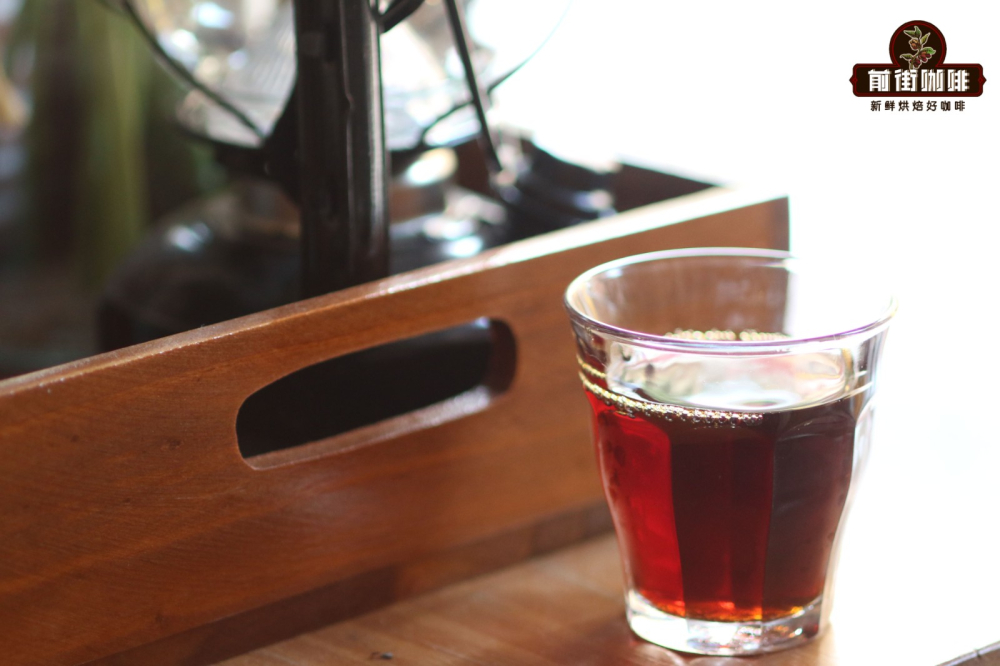
Coffee is refreshing because of caffeine. Caffeine, chemical formula C8H10N4O2, is a xanthine alkaloid, a central nervous system stimulant that temporarily repels drowsiness and restores energy and is clinically used for coma resuscitation. Excessive drinking can lead to insomnia, palpitations and other symptoms.
Decaffeinated coffee has removed almost all caffeine through chemical solvents. About 3% of the remaining caffeine is almost undetectable for most people. Decaffeinated coffee is also called decaffeinated coffee because caffeine cannot be removed 100%. Decaf refers to coffee with only a small amount of caffeine, and a cup of decaffeinated coffee contains no more than 5mg (usually a cup of 236mI coffee contains 50mg to 200mg caffeine). Decaf Decaf is the abbreviation of decaffeinated coffee (decaffeinated coffee). Decaf does not mean there is no caffeine at all, and the standards for decaf vary from country to country. According to the FDA standard of the US Food and Drug Administration, the caffeine removal rate of decaffeinated coffee is not less than 97%, while the EU standard caffeine removal rate should reach 99.9%.
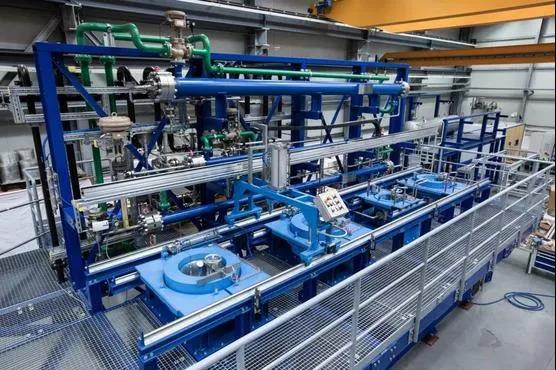
Although decaf coffee extracts a large amount of caffeine, it still retains 2%, 3% caffeine, that is, each cup of decaf espresso still contains about 0-7 mg of caffeine, although there is still caffeine. However, compared with ordinary espresso, decaf caffeine is not affected by most people.
The origin of decaf the first person in history to extract caffeine from coffee was Runge, but he did not conduct further research on it or put it into commercial use. The first person to commercialize the decontamination was Ludwig Roselius, a German who invented the decontamination method in 1903 and applied for a patent in 1906, but it is no longer used today because of the use of benzene as a solvent in the method.
The process of removing caffeine from beans is quite simple. In all cases it needs raw coffee beans, so the coffee beans haven't been roasted yet. Raw coffee beans are soaked or cooked in a series of solvents, usually with a water bath to extract most of the caffeine.
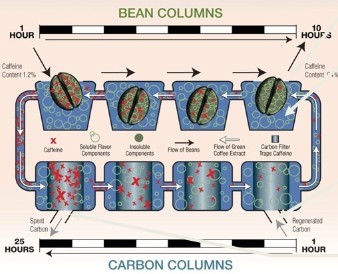
There are three methods to extract caffeine from coffee beans: Swiss water treatment, direct solvent treatment and carbon dioxide high pressure extraction. The most commonly used method for extracting caffeine is the Swiss Water treatment (The Swiss Water-Only Process), which is commercially developed and efficient. Swiss Water Process, abbreviated as SWP, Swiss water decaffeinated treatment, not because the water is Swiss, but because it was first invented and successfully experimented in Switzerland, and later it was widely used for commercial use for decaffeination treatment. At present, most of the Swiss water decaffeination treatment in the world is carried out in a treatment plant in Canada, and the decaffeination process is aimed at raw coffee beans rather than ripe beans. It is difficult to remove caffeine without affecting other substances in coffee, such as sugars, cellulose, protein, citric acid and fruit acid.
The Swiss water treatment process involves soaking raw coffee beans in hot water, which is called "flavor filled water" (Flavor-charged Water) in Swiss water treatment. This water contains all the flavor factors that should be found in raw coffee beans, but lacks caffeine. This special water is the most important medium in the next decaffeinated process. The coffee beans are filtered out after the flavor is filled with water, and the flavor-filled water will filter out the caffeine with an activated carbon filter, and the rest is hot water full of pure flavor factors, and then re-soak the filtered coffee beans with hot water full of pure flavor factors. let the coffee beans reabsorb the coffee flavor.
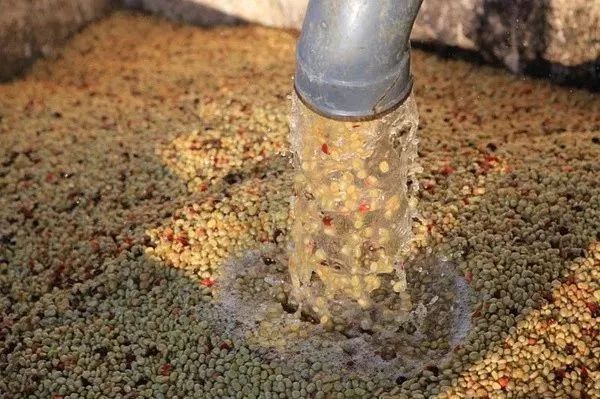
We often say that the flavor of coffee is directly related to its treatment, and the process of coffee bean detoxification will change its own flavor to a certain extent, but it will not be so obvious.
The decaf on the front street is a decaf from the Swiss water treatment in Colombia. Colombia is located in northwestern South America, bordering Venezuela and Brazil to the east, Ecuador and Peru to the south, Panama to the northwest, the Caribbean Sea to the north and the Pacific Ocean to the west. The land area is about 1.142 million square kilometers, ranking fourth in South America.
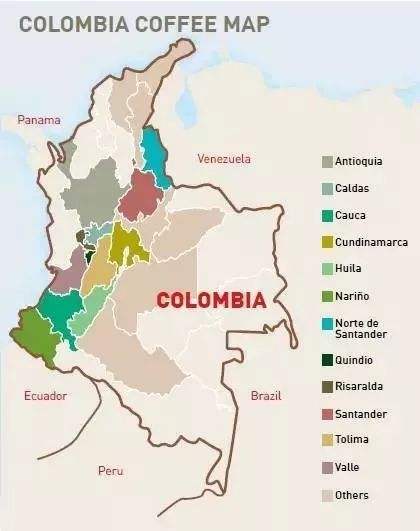
Colombia is the only country in South America that has the coastlines of the North Pacific and the Caribbean. The tropical rain forest is dominated by climate and rich in natural resources. Historically, it is an agricultural country that mainly produces coffee. Colombia's mild climate, humid air, and diverse climate make it a harvest season all year round, with different kinds of coffee ripening at different times.
Colombian coffee is a very representative variety of Arabica coffee, its aroma is rich and thick, with clear high-quality acidity, high balance, sometimes with nutty flavor, endless aftertaste, regardless of appearance and quality. Colombian coffee is of high quality.
Colombian low-caffeine coffee bean varieties
The decaf on the front street includes three varieties of iron pickup, Kaddura and Castillo. Iron pickup, one of the oldest Arabica species in the world, is loved for its delicious and sweet flavor, but it has been replaced by many high-yield coffee varieties in Colombia because of its low unit yield. Kaddura is a natural mutant of bourbon, its flavor is comparable to or slightly worse than bourbon beans, more importantly, super adaptability, no shade trees, direct exposure to the sun can also be full of vitality, commonly known as exposure coffee (Sun Coffee), can adapt to high-density planting.
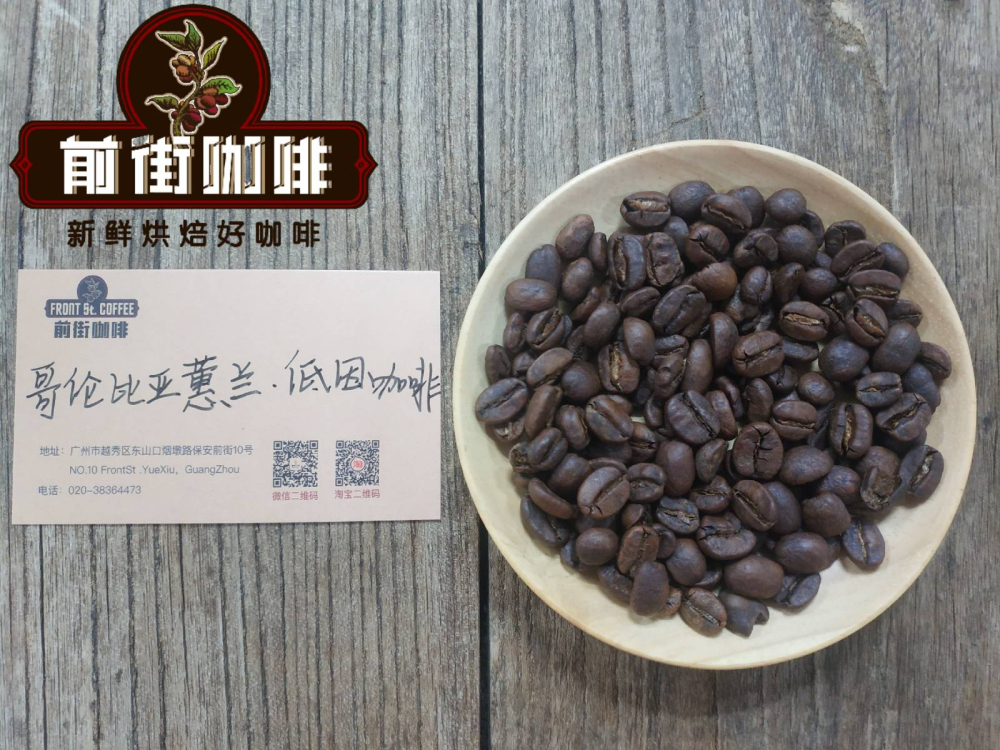
Castillo, based on Colombian species, was crossbred with Kaddura until the tenth generation. Although it was not favored by practitioners in the industry at its debut, there has been no shortage of elegant and meticulous batches on the market in recent years.
What's the difference between decaf and regular coffee?
The main difference between decaf and ordinary coffee is the content of caffeine. Decaf contains a small amount of caffeine, while ordinary coffee contains relatively more caffeine. Decaf is usually made from a kind of coffee beans that are high in fat. Ordinary coffee is made from traditional coffee beans.
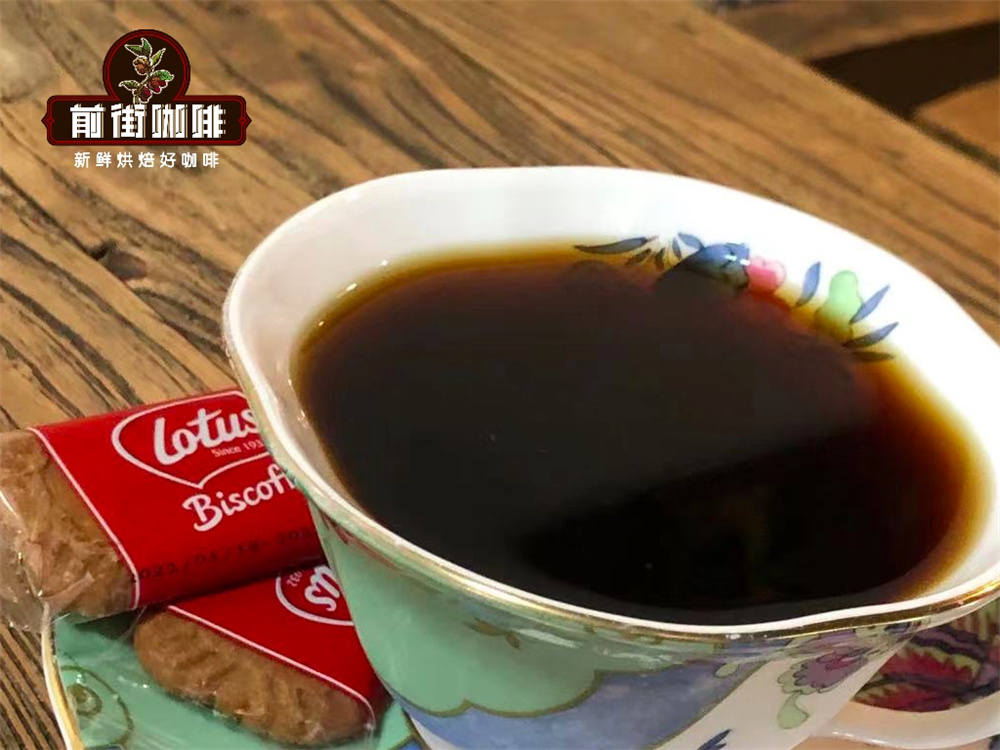
In addition to coffee content, there are some other differences between decaffeinated and regular coffee. The first and most important thing is the difference in taste. Today, the decaffeinated process of coffee beans has been improved, and most of the flavor and intensity can still be retained. But a large part of it will disappear in decaf coffee.
On the other hand, many people who have drunk decaf say that decaf is not good. Qianjie thinks it may have something to do with the variety of coffee beans. For example, many companies that produce low-caffeinated coffee naturally prefer some varieties of coffee beans with high caffeine content (such as robusta beans) when choosing raw materials. Coffee beans are not tasty before the decaffeinated beans are treated. Like other coffee beans sold in coffee shops, low-caffeinated coffee can perform very well even after decaffeination if it starts with high-quality Arabica beans from the beginning of raw beans.
Suggestions for making coffee in front of the street:
To brew a good cup of coffee, you still need to pay attention to the freshness of the beans. Qianjie has always believed that the freshness of coffee beans has a great relationship with the flavor of coffee, so the coffee beans shipped in Qianjie coffee are roasted within 5 days. The purpose of Qianjie roasting is "freshly roasted coffee", so that every guest who places an order is the freshest coffee when he receives it. The bean cultivation period of coffee is about 4-7 days, so when the guest gets it, it is the time when the flavor is the best.
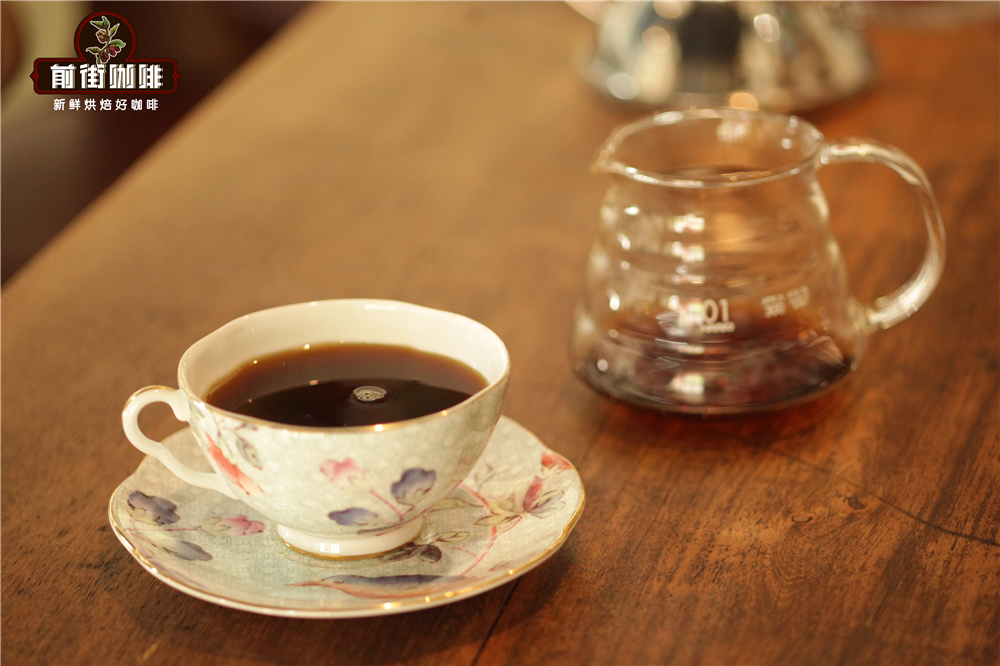
For those who need to be ground, Qianjie warmly reminds you that if the coffee beans are ground in advance, there is no need to raise the beans, because in the process of transportation, the pressure caused by carbon dioxide in the package can also make the coffee flavor round. so you can drink a cup of coffee as soon as you receive the coffee powder. But the coffee powder needs to be brewed in time, because the coffee powder oxidizes more quickly after contact with the air, that is to say, the flavor of the coffee will dissipate more quickly, and the flavor of the coffee is not so good. Therefore, Qianjie suggests buying whole beans, grinding and flushing now, so that we can better taste the flavor of coffee.
Parameters for brewing decaf in Qianjie:
KONO filter cup, 88 degrees Celsius water temperature, 1:15 powder / water ratio, 15g coffee powder, grinding degree (standard sieve 20 pass rate 75%), three-stage extraction.

The use of segmented extraction, with twice the amount of coffee powder water for steaming, that is, 30 grams of water for 30 seconds, and the reason for the need for steaming process is to make coffee powder can discharge the internal carbon dioxide gas, so that the latter stage of the extraction is better stable. When the small water is injected around the circle to 125 grams, the injection will be stopped until 225 grams, then the filter cup will be removed after the dripping of the filter cup, and the extraction time will be 2 minutes 39 grams. Next, pick up and shake the whole cup of coffee, then pour it into the cup and taste it.
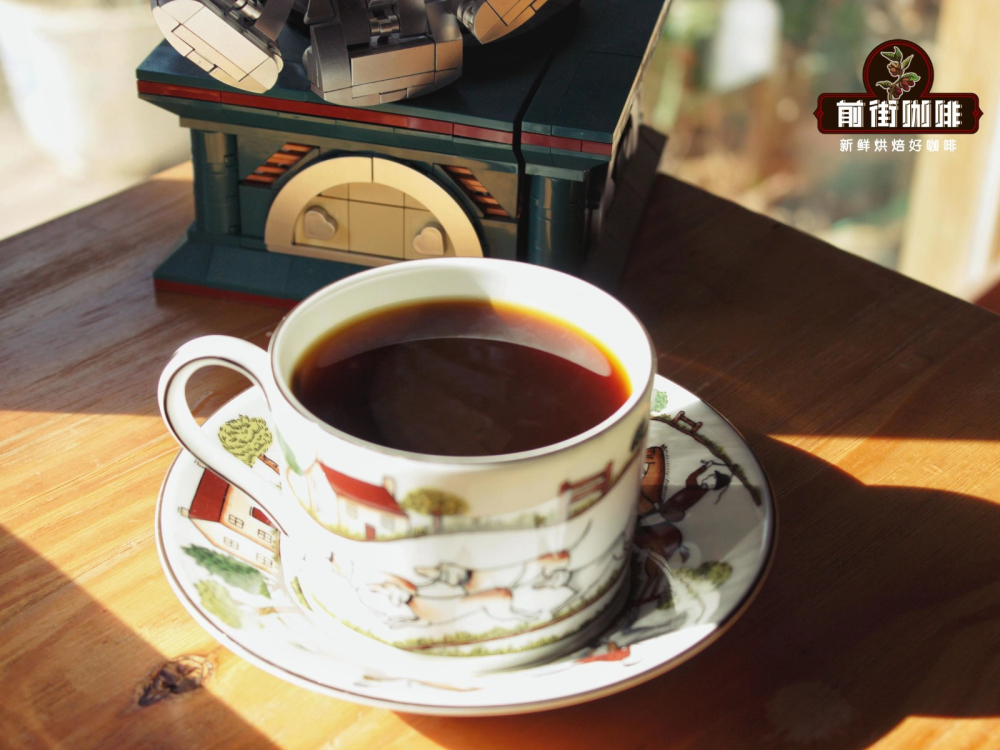
Front Street Columbia Swiss water treatment decaf flavor characteristics: brewing flavor: dark chocolate, caramel, nuts, mellow taste.
Decaf coffee usually contains antioxidants in similar amounts to regular coffee. Decaf coffee not only has antioxidant effect, but also does not affect sleep, which is not the role of ordinary coffee, so decaf coffee has become another choice for many people. Although decaffeinated coffee is mainly aimed at people with caffeine intolerance, decaf does not really contain caffeine, but contains a small amount of caffeine, so it is best not to drink too much. Qianjie believes that it is not recommended to drink more coffee, whether it is decaf, decaf or ordinary coffee, but to a certain degree, which will be bad for your health.
Professional coffee knowledge exchange more coffee bean information please follow the coffee workshop (Wechat official account cafe_style)
For more boutique coffee beans, please add private Qianjie coffee on Wechat. WeChat account: qjcoffeex
Important Notice :
前街咖啡 FrontStreet Coffee has moved to new addredd:
FrontStreet Coffee Address: 315,Donghua East Road,GuangZhou
Tel:020 38364473
- Prev
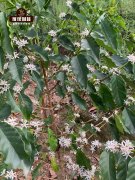
What's the difference between shade tree grown coffee and boutique coffee? is shade grown coffee more expensive?
Coffee grown under shade trees seems to be a newly discovered miracle. You will see it printed on the label and touted by more and more coffee shops. Most people think that there is something special about shade-grown coffee, and it is. But the idea of growing coffee in the shade is neither innovative nor unique. In fact, this is the first place to find wild coffee: trees in other trees.
- Next
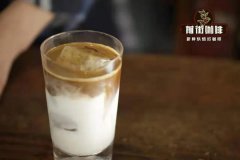
Is iced coffee cold extracted coffee? how do beginners make good iced coffee?
Coffee seems to be the perfect summer treat. We haven't entered the hot season yet, but it's coming towards us. But first, how do we make iced coffee? Is it really any different from other cold coffee drinks? It does have a very broad name, so it can take several drinks as a category. So, let's take a closer look at iced coffee. Let's see what it is.
Related
- What brand of black coffee is the most authentic and delicious? what are the characteristics of the flavor of the authentic Rose Summer Black Coffee?
- Introduction to the principle and characteristics of the correct use of mocha pot A detailed course of mocha pot brewing coffee is described in five steps.
- Which is better, decaf or regular coffee? how is decaf made?
- How much is a bag of four cat coffee?
- How about four Cat Coffee or Nestle Coffee? why is it a cheap scam?
- Which is better, Yunnan four Cats Coffee or Nestle Coffee? How about cat coffee? is it a fake scam? why is it so cheap?
- How about Cat Coffee? what grade is a hoax? which instant coffee tastes better, four Cat Coffee, Nestle Coffee or G7 coffee?
- Process flow chart of coffee making-Starbucks coffee making process what coffee tastes good at Starbucks
- The top ten best coffee beans in the world Rose summer coffee or Tanzanian coffee tastes good
- Yunnan four cat coffee is good to drink?_four cat coffee is a big brand? four cat blue mountain coffee is fake?

